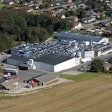Egg yolk is known as an excellent source of lutein. Previous research has also shown that lutein in egg yolk is highly bio-available compared to other sources. Lutein— as well as other cartenoids—has been reported to be important in preventing age-related macular degeneration. Lutein and zeaxanthin have also been found to have potential for preventing heart disease and stroke.
Lutein-enhanced eggs are now being marketed by the egg industry. With the importance of lutein in egg yolk, accurate analysis is also a consideration. Yue et al., 2006 (Journal of Food Science 71(4):(239-241) has investigated ultrasonic assisted solvent extraction of lutein from egg yolk. The researchers postulated that high frequency ultrasound breaks down the fat matrix, thereby improving efficiency of the extraction of lutein from egg yolk. They thought this approach could be superior to the present saponification method. In their study, they compared extraction yields of lutein from egg yolk using the hexane solvent (SOL) and ultrasonic assisted-solvent extraction (UA-SOL) methods at various levels of alkaline saponification (0, 0.2, 0.4 or 0.6 ml) of alkaline solution (10% w/v NaOH in water). An ultrasound probe (Dismembrator Fisher Scientific Inc., Fair Lawn, N.J.) was used. The extracted lutein was analyzed using a HPLC system.
Saponification had a significant effect on the yield of lutein. As the level of saponification increased from 0.2 to 0.6 ml, the yield of lutein extracted decreased from 63.9 µg/g to 6.3 µg/g. The highest yield was obtained with the UA-SOL method without an alkaline solution which was 89.9 µg/g. Previous research has reported a range of lutein contents in egg yolk ranging from 150 to 435 µg/yolk using saponification. (Handelman et al., 1999, Am. Journal of Clinical Nutrition 70:247-251). If one assumes a yolk weight of about 20g, the lutein content ranged from 7 to 21 µ/g using the saponification method. These authors concluded that saponification caused degradation of lutein. Their work indicates that ultrasound assists the recovery of lutein by physically breaking down the sample matrix without negatively affecting the extraction of lutein.
This research is of real importance to our egg industry. It’s likely that previous research has greatly underestimated the amount of lutein in the egg yolk. As the egg industry continues to fortify the lutein content of the egg through the diet of the hen, this ultrasound method should be considered to determine the lutein content of the egg yolk.


















